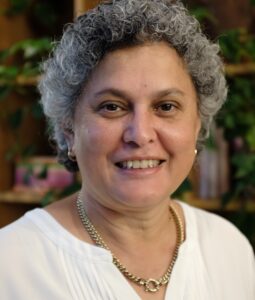
Featured in this week’s spotlight is Dr. Christine Stephenson, Chief Architect and Head of Curriculum of Coaching Enterprise Architects.
Dr. Stephenson is one of the female pioneers in Enterprise Architecture and has been practicing for over 20 years. She has seen this discipline grow from being academic to now mainstream in many organisations all over the world.
Dr. Stephenson is passionate to share her knowledge with others so that they may have immensely successful careers as Enterprise Architects, just as she has had, learning from many luminaries who forged this wonderful discipline for others to follow.
Question: How did you get your start in the industry?
Answer: My first job after graduating with a Bachelors of IT was teaching at university whilst I was studying for a Masters degree in 1995. This was where I first bumped into the world of Enterprise Architecture where I had an assignment to critically analyse Sowa and Zachman’s Information Systems Architecture framework. My next role was what I call my first ‘real’ job as a software developer (hated it passionately), but was given an opportunity to review how the company could shorten its time to market by optimizing the business model from when an order was taken till when the product was loaded onto the clients mainframe. My first Enterprise Architecture project, but no one called it that in those days.
Q: What is your current responsibility and what is your typical day like?
A: I like to say I am semi-retired, but my friends laugh at me as I am still very active and involved in Enterprise Architecture in a variety of ways. I head up Coaching Enterprise Architects, a network of people like me, who love to spend time with others to share our knowledge either through coaching, teaching or doing projects when they pop up.
I don’t have typical days anymore; I have typical weeks. I spend my days living my dream which is to work when I want to work and not because I HAVE to work. I love my work and my life very much and especially all the people I get to hang out with. I can’t really call it work, because I love what I do so much.
I work an integrated day that might start with spending time growing vegetables in my garden, walking the dogs or researching recipes for my farmer’s market stall. When I am working on a project, I may log in to join stand up meetings in the morning and spend the rest of the day leading or participating in client workshops.
Most of my projects are Business Architecture in nature, but often I get pulled in to help organisations create technology roadmaps and digital transformation strategies because of my deep background in IT and how to communicate complex technology concepts in simple and easy to understand ways.
My most favorite part of my week is when I get to spend time coaching clients, either one-on-one or teaching a Business Architecture class.
Q: What do you like most about your job?
A: I don’t just like what I do, I love what I do! I love to spend time with people to share what I know about Enterprise Architecture, especially all my war stories. Whether it is through the project work, coaching or training, it gives me immense satisfaction to inspire others to dedicate their careers to Enterprise Architecture. When my son gets asked what I do and we know most people still don’t understand what Enterprise Architecture is, he says I talk a lot. Yep! That’s me!
My best work is not the amazing architecture models I have created nor the clever strategies I have delivered around the world. My best work is seen in the people I have had the honor to work with who continue to practice Enterprise Architecture the way we learnt it and are now inspiring others.
My heart swells with pride when I read articles on LinkedIn from people I’ve connected with across the globe as they now confidently take their place as authorities on a topic. I’m inspired to collaborate with other thought leaders to spread the word about Enterprise Architecture. My YouTube collaboration with Raj Ramesh, an amazing visual author, on ‘What is Enterprise Architecture?’ has over 300K views and is mandatory viewing for many renowned university courses.
I want to continue to share what I know about Enterprise Architecture with as many people as I can. I’m not sure I will ever fully retire, not as long as there is still someone out there that needs some support to become a great Enterprise Architect.
Q: What trends in architecture are you looking out for the rest of 2023 and 2024?
A: To be honest, I don’t really care about trends in architecture. This is because I believe that as Enterprise Architects, we need to always do what is right for our clients and the business we work for. We are influencers! Not trendy!! Sadly, most Enterprise Architects focus far too much on trends and not enough time on understanding business strategy and how best to achieve it. What I would love to see happen in the future is that Enterprise Architects realise that their discipline is about ‘people’ and not ‘technology’. How do we bring multi-disciplinary teams of experts together in a way that allows us to solve simple and complex problems in novel ways. We need to humanize Enterprise Architecture more and help all types of architects to fine tune their people skills. We already have an abundance of technology expertise, we need to learn how to take our place in business as a partner and not a technology service provider. to learn more about is the latest tools to help automate the knowledgebase.
Q: What is one thing we can do to support or increase the women in architecture?
A: My simple response is to have more men join WIA and also people from around the world and disciplines other that where typical Enterprise Architects come from – IT. Why? What we need in Enterprise Architecture is diversity. So, if we are going to set up a group exclusively for women then we fail as Enterprise Architects.
Organisations need to recognize that it takes diversity to solve problems in novel ways. Our principles and values need to change to support a new way of working – a world where diversity is always front of mind. We need to agree what the best diversity mix is to solve problems and to be supported by our leaders to have this mix in any team, not just projects. Gender, hence, women, must be part of the diversity equation, race, physical location, worker type, being some other diversity factors.=
The one thing I ask business leaders to do is to not just pay diversity lip service. Lead by example from the top by establishing strong diverse leadership teams and setting up strong diverse teams below them. Champion and recognize staff for living diversity values and delivering extraordinary results. In my opinion, by doing this, women like me, will be more confident to participate and contribute from a place of strength, whether it is in architecture or not.
